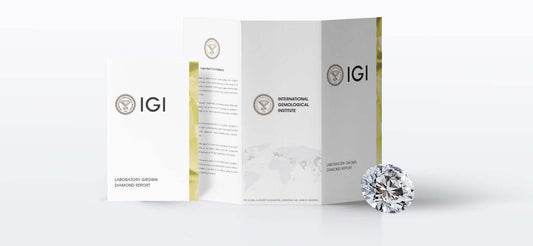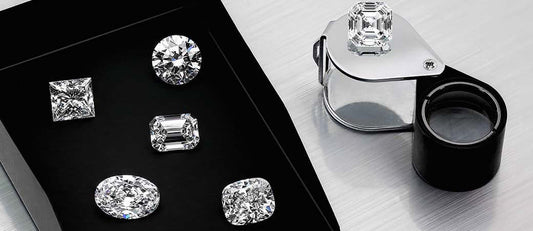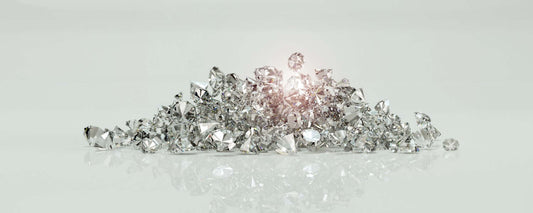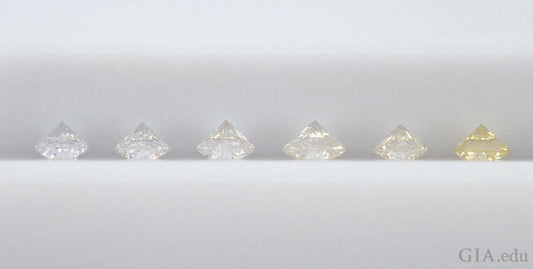What Is the Cut of a Diamond?
Cut is the most complicated item in the 4Cs of diamonds. Diamond cut involves the exact angle of each facet, the smoothness of polishing and the even proportion of each part of the diamond, so that the diamond can refract and reflect most light rays and show the most beautiful sparkles.
Although the color and clarity of diamonds are limited by nature, but only with exquisite craftsmanship can the beauty and brilliance of diamonds be exhibited. Among the diamond 4Cs, cut has the biggest impact on the sparkle, brilliance and fire of a diamond . Even diamonds that are high in color and flawless can look dull if they are not cut properly and poorly polished. In addition, cut also directly affects the visual size of the diamond, so it is definitely a grading item that cannot be neglected.
Diamond Cut Categories
Diamond Cut can be subdivided into Cut, Polish and Symmetry. These three factors determine the ideal light refraction and reflection of the diamond.
Cut - The angles and proportions of each facet of a diamond. Diamonds are precisely calculated to be cut into standard proportions in order to maximize the internal reflection and refraction of light, resulting in beautiful brilliance and fire.

- Table – Top horizontal facet of the diamond
- Depth – The diamond’s overall depth from the surface of the table to the culet
- Culet – The tip or the small facet at the bottom of a diamond
- Girdle – The middle portion of a diamond, a narrow section separating the crown from the pavilion
- Crown – The upper portion of the diamond, from the top edge of the girdle to the table
- Pavilion – The lower portion of a diamond from the bottom edge of the girdle to the culet
Polish – Smoothness of the polished facets, the smoother the facets, the stronger the light reflection.
Symmetry – How well and symmetric the diamond is cut, such as whether the shape of the circumference is complete, whether there are uneven facets, or whether the table is parallel to the culet, etc.
The five GIA gradings for the above three categories are Excellent, Very good, Good, Fair and Poor.
IGI gradings for Polish and Symmetry are the same as GIA's. But its gradings for Cut are Ideal, Excellent, Very Good, Good and Fair. For lab-grown diamonds, we recommend using IGI's Ideal cut grade in place of GIA's Excellent cut grade.
The Importance of Cut
A high-quality diamond should have precise proportions and perfect symmetry, so that the light entering the diamond is internally reflected by different facets, dispersed into a color spectrum, and finally refracted from the top, making the diamond dazzle with brilliance. If a diamond is cut into a proportion that is too thick or too shallow, so that light does not reflect efficiently from the top, but leaks from the sides or bottom, the diamond will lose its luster and be relatively dull, thereby reducing its value.

Optical Effect
The sparkles emitted by diamonds is actually the result of optical effects. Relevant aspects of optical effects include:
Brightness – The effect of all the diamond's internal and external reflections of white light.
Fire – The flashes of color you see in a polished diamond.
Scintillation – The flashes of light and the contrasting dark areas you see when the diamond, the light, or the observer moves.
Hearts and Arrows
A round brilliant diamond has a total of 57-58 facets. If all the facets are perfectly symmetrical and reach a certain proportion range, when viewed from above the diamond with a special viewing tool, you will see a pattern of eight arrows; Viewed from the bottom of the diamond, eight heart-shaped patterns will be seen, and both optical patterns are perfectly repeated.
Many people misunderstand Hearts and Arrows effect as a perfect cut proportions. But this is actually a marketing gimmick used by jewelers. They connect the diamond's eight hearts and arrows image effect to the golden arrow in the story of Cupid, the god of love, making diamonds a more romantic symbol of love. Since most round brilliant diamonds are uniformly cut, as long as the cut and symmetry are graded Ideal, Excellent or Very Good, they often achieve varying degrees of Hearts and Arrows effect.






